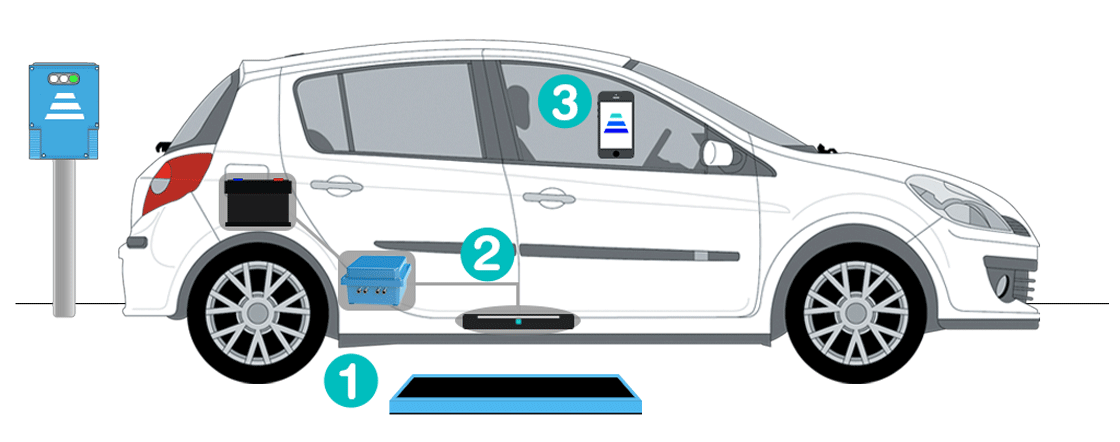After a long day of picking people up and dropping them off, an autonomous electric car will need to go back to its home base and recharge. But that means that a real live human will have to plug it in (or put gasoline in it). But a Red Hook startup led by a former Army captain is making technology so that the car will be able to wirelessly charge itself. True autonomy.
Jeremy McCool got back from a 15-month tour in Baghdad in 2008.
“I saw the effects of war and I wanted to do something to reduce our dependence on foreign oil,” he said recently in an interview. Shortly after his return, he enrolled at Columbia University for a Master’s of Public Administration in urban policy.
“Eighteen to 24 months from now, you’re going to wake up and be living in a city that has autonomous vehicles woven into the fabric of everyday life,” he said. “That’s going to be even more revolutionary when you add in wireless charging because it’ll be seamless. All you’re going to do is call up an Uber or Lyft and it’ll take you to your destination.”
McCool cofounded HEVO Power in November of 2011. The company (which stands for Hybrid & Electric Vehicle Optimization) makes wireless charging stations for electric vehicles.
Here’s how it works: you attach a HEVO receiver to the underside of your car (or forklift). You place a HEVO power station on the ground and connect it to the electrical grid. When your car is on top of the power station, the receiver will communicate that it’s there and wants juice, and the power station will send electricity through the air using radio waves right up into your vehicle. Then HEVO has an app, so that you can see how your car (or fleet of trucks) is doing on power.
It’s pretty futuristic-sounding technology, but it turns out there’s already another company doing the same thing, Plugless, based in Richmond, Va. You might also recall uBeam, the ambitious wireless charging startup that was going to revolutionize the world, until it ran into issues a bit earlier this year. HEVO’s is proprietary technology, but it has precedent.
Before they moved to Red Hook, McCool and his team were accepted into the NYC Accelerator for a Clean and Resilient Economy (NYC ACRE) incubator in SoHo. In 2012, the company began working with engineers at NYU Tandon on the technology of the wireless power station. The following year, it was accepted into the NYU Urban Future Lab, in Downtown Brooklyn, and in 2016 it made the jump to its own manufacturing space in Red Hook. Now with 15 full-time employees between Red Hook and a European office in Amsterdam, McCool likes where the company is at.
“The community of Red Hook is built and established on innovators and people who are industrial,” he said. “When you first enter Red Hook you come on Van Brunt [Street] and the first thing you see is a Tesla center. That just immediately welcomes you to an innovative hub. There’s Sixpoint [Brewery], there are coffee roasters, whiskey distilleries. There is a nucleus of enterprises that have layered themselves across the five boroughs and beyond from this one little neighborhood. You can get a lot of really great industrial space which we needed and the culture and atmosphere around here is about getting the job done.”
HEVO’s market, at least initially, will not be consumers, but rather car makers, or automotive OEMs as they’re called in the biz, and fleets of vehicles.
By selling HEVO directly to car manufacturers, HEVO hopes to become the standard charging mechanism for future electric cars in the same way that both Apple and Samsung phones use Intel processing chips.
The other customer would be fleets of trucks or construction vehicles, where electric power has a bigger market share than in the consumer car market.
For now, the company has been financed by winning numerous awards and grants, totaling $1.4 million, McCool said, and $855,000 in venture funding. The coming year will be big for actually selling products.
“What we’re targeting for 2017 is 350 units and we think we’ll be able to hit that pretty easily,” McCool said.
Buckle up!
Join the conversation!
Find news, events, jobs and people who share your interests on Technical.ly's open community Slack


